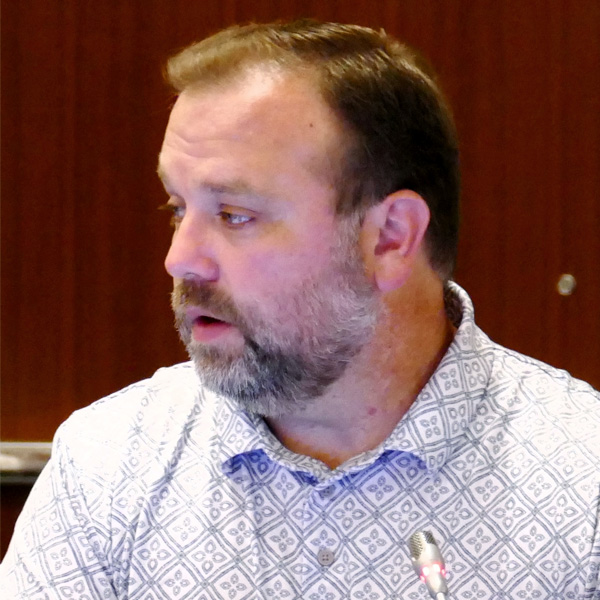PJM has filed governing document revisions that would remove energy efficiency from its Reliability Pricing Model (RPM), in line with stakeholder endorsement of an Independent Market Monitor proposal to eliminate EE from the capacity construct (ER24-2995).
The Monitor has argued EE can’t participate as a capacity resource because the load reductions already are accounted for in PJM’s load forecast, and that capacity market revenues to program providers constitute an uplift payment with no corresponding reliability benefit.
Ahead of the Aug. 21 vote, EE providers argued the load forecast does not account for EE installations made possible by RPM revenues and that hastily moving to a vote to bar an entire resource class would curb consumers’ ability to mitigate rising capacity costs. (See PJM Stakeholders Endorse Elimination of EE Participation in Capacity Market.)
The tariff and Reliability Assurance Agreement (RAA) revisions would come with a Nov. 6 effective date, which would preclude EE participation in the 2026/27 Base Residual Auction (BRA) set to begin Dec. 4.
“After years of experience, coupled with a careful review of what energy efficiency sellers have been including in their offers, it has become obvious to PJM, and a sector-weighted super majority of the PJM members, that the current paradigm is no longer appropriate,” PJM wrote in the Sept. 6 filing. “Under the current framework, energy efficiency projects are compensated at the relevant RPM auction clearing price on the supply side even though energy efficiency capability has already been incorporated into the load forecast in aggregate and reduced the amount of capacity that needs to be procured in the RPM auction.”
To avoid double counting the benefits of an EE installation — through both reduced capacity procurement and BRA revenues to the EE provider — PJM instituted the addback process in 2016, which removes EE that clears a capacity auction from the supply stack and increases the load forecast by a corresponding amount. Consumer advocates argued that undermines the ability for EE to displace capacity resources and drive clearing prices lower, while the Monitor argued it is an unnecessary uplift mechanism.
A proposal offered by the New Jersey Division of the Rate Counsel on Aug. 21 would have eliminated the addback with the aim of allowing EE to clear in capacity auctions akin to generation and demand response resources, while the main motion previously endorsed by the Market Implementation Committee would have tightened the measurement and verification (M&V) requirements and mandated a sole causal link between capacity market revenues and EE installations. Both were rejected before the Monitor proposal was endorsed.
In its filing, PJM wrote that state-mandated EE programs will continue to deliver benefits to consumers in the form of reduced capacity costs even in the absence of RPM revenues. Exelon sought amendments to the MRC proposals to add governing document language differentiating utility EE programs from third-party providers driven purely by PJM revenues.
“Energy efficiency projects will continue to receive economic benefits via reduced wholesale costs and the natural incentive of lower energy costs,” the filing said. “There is simply no reason the same energy efficiency should be simultaneously compensated for capacity revenues based on the same underlying project that also receives a reduction in demand costs.”
Petition Urges Technical Conference on EE
A group of EE trade groups and advocates jointly filed a petition with FERC urging it to open a technical conference on RTO rules around EE. Filing as the Alliance to Save Energy, the petition is signed by the American Council for an Energy-Efficient Economy, California Efficiency and Demand Management Council, Energy Efficiency Alliance of New Jersey, Institute for Market Transformation, Keystone Energy Efficiency Alliance, Metrus Energy, Midwest Energy Efficiency Alliance, National Association of Energy Service Companies and National Association of State Energy Officials.
The Aug. 29 petition states EE can effectively rise to the challenges posed by rising demand, the clean energy transition, transmission upgrades and backlogged interconnection queues in a manner that resources requiring long interconnection and construction lead times cannot (AD24-12).
“Energy efficiency offers significant advantages, including reducing the need for new generation and the costly transmission upgrades that come with it,” the coalition wrote. “By lowering demand, it can also free up existing transmission capacity, enabling a more expedited interconnection of additional resources. Moreover, unlike other resources, energy efficiency can be implemented without depending on the interconnection queue, resulting in substantial time and cost savings.”
The rule changes proposed by PJM and several complaints filed by the Monitor and market participants go beyond one RTO to implicate EE across the nation, the coalition wrote. Acting without cross-RTO guidance from FERC since it accepted PJM’s market design for EE in 2009 (ER05-1410), individual RTOs and their stakeholders have created a patchwork of market designs, the petition states.
“It is imperative that any changes to market rules affecting the participation and eligibility of EERs, which could jeopardize their role in these markets, stem from a thoughtful, holistic process led by the commission — not by one-off actions from individual RTOs,” the petition says.
Four panels are envisioned as part of the technical conference, including:
-
- Energy Efficiency in Wholesale Markets Today, focusing on current market structures and models for EE participation.
- Reconciliation with Load Forecast, looking at how EE interacts with RTO load forecasts and whether market eligibility should be tied to inclusion in forecasts.
- Eligibility, Measurement, Verification and Standards, considering whether a causality principal should be an element of participation, as well as how capacity contributions can be quantified.
- Value Proposition of Energy Efficiency, focusing on EE compensation and its effectiveness as a supply resource.
American Efficient Pushes Back on Allegations of Tariff Violations
American Efficient is defending itself from accusations the company violated the PJM and MISO tariffs in the design of its mid- and upstream energy efficiency (EE) programs, which provide rebates to manufacturers, distributors and retailers for offering qualifying products (EL24-113).
The Independent Market Monitor has accused several EE market participants of not meeting the RPM participation requirements and has requested FERC prohibit future participation and require revenues be returned. The commission’s Office of Enforcement (OE) also has opened an investigation into American Efficient specifically. (See Monitor Alleges EE Resources Ineligible to Participate in PJM Capacity Market.)
In its response to a 1b.19 notice from the OE — which notifies parties to an investigation that the office intends to recommend an administrative proceeding or civil action — American Efficient wrote that neither the Monitor’s complaint nor the OE investigation had substantiated claims of fraud. While the open investigation is confidential, FERC publicly posted American Efficient’s response to the 1b.19 notice, an executive summary of the response, a primer with background about the company and its request for a technical conference, and materials PJM submitted about the stakeholder process.
In the primer, American Efficient wrote that allegations that the company had engaged in fraud are unsubstantiated and the details of its program were reviewed and approved of by RTO staff.
“While the Market Monitors in PJM and MISO have strong policy preferences that EERs be removed from the markets, they are not arguing (nor could they, based on the record) that American Efficient misrepresented its program when seeking approval,” the company wrote. “Instead, the allegations go directly to the fundamental features of American Efficient’s EER program. There is no support for the allegation in the Preliminary Findings that American Efficient had a scheme with an intent to defraud the markets when the features were transparently presented to the RTOs, scrutinized by RTO staff, and subsequently approved.
“Put simply, an enforcement action based upon fundamental features of American Efficient’s EER program that MISO and PJM knew and approved of would be inequitable.”
In the executive summary, the company argued that PJM’s statements in the stakeholder process that the tariff does not require a link between capacity market revenues and EE programs run against the OE’s allegations. American Efficient said its PJM subsidiary Affirmed Energy followed the tariff as written and the OE is seeking to hold it to prospective rule changes.
“The plain text of the tariffs alone demonstrates that OE is wrong — EER providers are not required to pay end users, contract with end users, or prove that end users bought energy efficient products solely because of the provider’s program,” the company wrote. “Now that PJM has publicly stated its views about the tariff, affirming American Efficient’s position and rejecting OE’s position, that should conclusively settle the matter — OE has been wrong all along.”
The materials PJM provided to the OE state the tariff interpretation the RTO offered throughout the stakeholder process is in contradiction with the OE’s allegations.
“Through this process, PJM has clearly communicated in both verbal comments and public documents its view of the current rules — a view that is in direct contradiction to the Office of Enforcement’s assertions about the requirements of PJM’s tariff,” the RTO wrote.
In its filing to eliminate EE, PJM again stated there is no requirement that there be a causal link between capacity market revenues under the status quo rules and EE programs and that it is seeking only to bar EE participation for future auctions.
“PJM seeks to apply the proposed market rule change on a prospective basis and is not proposing to unsettle RPM auction results or undo any existing energy efficiency resource commitment under the current tariff and RAA rules,” PJM wrote. “The filed rate doctrine precludes retroactive changes for past actions where legal consequences have attached. As a result, energy efficiency resources that cleared the RPM Auctions for the 2025/2026 delivery year will need to follow through on their commitments and submit compliant post-installation measurement and verification plans in advance of that delivery year to substantiate their cleared quantities.”
In its 1b.19 response, American Efficient also wrote that the OE is singling out the company for a “market-wide policy matter” that should be resolved by rule changes rather than enforcement actions. The company repeated recommendations that FERC hold a technical conference to discuss how EE participates in capacity markets, focusing on whether they should be a supply-side resource, how capacity contributions can be measured and verified, and the rules around ownership of capacity rights to EE savings.
In addition to the allegations made regarding its participation in PJM’s capacity market, American Efficient wrote that MISO had found deficiencies in the capacity offered by its subsidiary Midcontinent Energy following an audit in 2021. While the company disputed the filing, Midcontinent opted to not seek to offer capacity in MISO’s market once the OE had supplied notice of its investigation.
A second complaint seeks the elimination of EE from the RPM and argues that the addback violates PJM’s tariff — a position also taken in a complaint the New Jersey, Maryland and Illinois consumer advocates filed. A complaint submitted by CPower alleges PJM overstepped in issuing guidance ahead of the 2025/26 BRA that tightened the auction participation requirements, substantially curtailing EE participation.

